Top Reasons to Visit Spain Part 3
Spanish Cuisine Renowned Throughout the WorldRecent Posts
Meet the Team
 Lawyer and Company Founder
Lawyer and Company Founder Lawyer
Lawyer Office Manager & Tax Specialist
Office Manager & Tax Specialist Legal Adviser
Legal Adviser Legal Adviser
Legal Adviser Administration and Accounts
Administration and Accounts Fiscal Adviser
Fiscal Adviser
The variety of Spanish cuisine separates it from its neighbors, particularly Italy and France. From Valencia on the east coast to the Basque Country in the north, you’ll never grow bored. Whether it’s fish, zesty soup, or delightful tapas.
Paella is a rice dish originally from Valencia. While it is commonly viewed by non-Spaniards as Spain’s national dish, Spaniards almost unanimously consider it to be a dish from the Valencian region. Valencians, in turn, regard paella as one of their identifying symbols. It is one of the best-known dishes in Spanish cuisine.
According to tradition in Valencia, paella is cooked over an open fire, fuelled by orange and pine branches along with pine cones. This produces an aromatic smoke which infuses the paella. Also, dining guests traditionally eat directly out of the pan instead of serving in plates
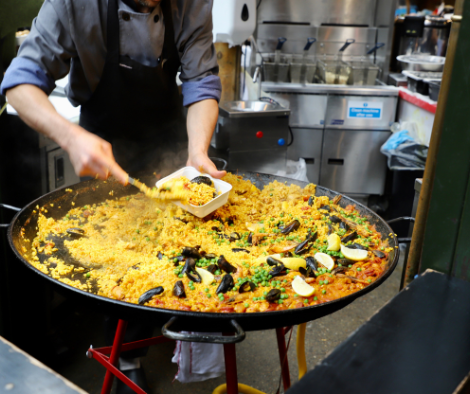
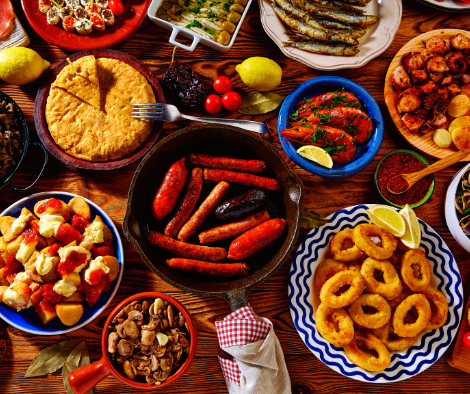
Tapas A tapa is an appetizer or snack in Spanish cuisine. Tapas may be cold (such as mixed olives and cheese) or hot (such as chopitos, which are battered, fried baby squid, or patatas bravas). In some bars and restaurants in Spain and across the globe, tapas have evolved into a more sophisticated cuisine. Tapas can be combined to make a full meal.
The word “tapas” is derived from the Spanish verb tapar, “to cover”,
Gazpacho is a cold soup and drink made of raw, blended vegetables. It originated in the southern regions of the Iberian peninsula and spread into other areas. Gazpacho is widely eaten in Spain and Portugal, particularly during hot summers, since it is refreshing and cool.
There are many theories as to the origin of gazpacho, including one that says it was a soup of bread, olive oil, water, vinegar and garlic that arrived in Spain with the Romans.
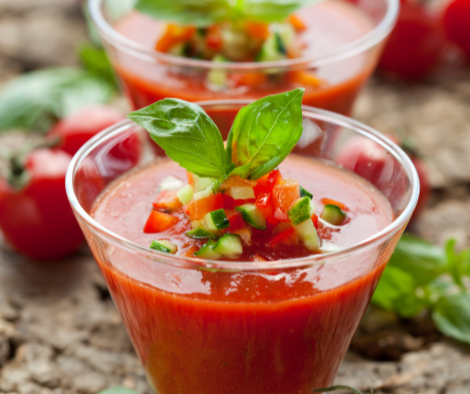
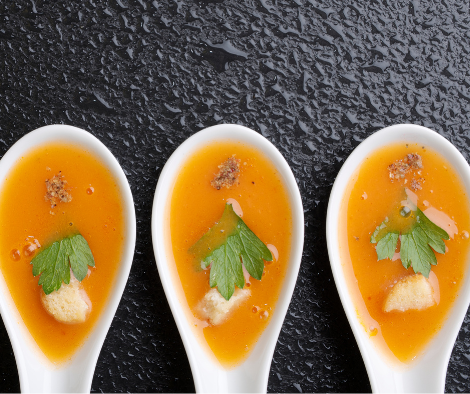
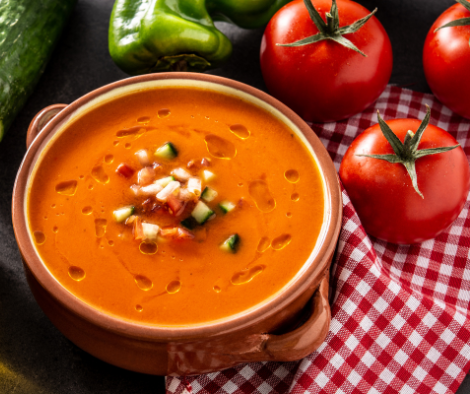
Jamón is a kind of dry-cured ham produced in Spain. It is one of the most globally recognized food items of Spanish cuisine.It is also regularly a component of tapas mentioned earlier.
Jamón is typically consumed in slices, either manually carved from a pig’s hind leg held on a jamonero stand using a sharp thin slicing knife, or cut from the deboned meat with a rotatory cold-cut slicer. It’s also regularly consumed in any shape in small portions.
As a product, Jamón is similar to Portuguese presunto and to Italian prosciutto, but the production differs by a longer curing phase (up to 18 months), giving it a dryer texture, deeper colour and stronger flavour than the former.

Seafood is a large part of Spanish cuisine. From the Bay of Biscay in the North to the Mediterranean in the West and the Alboran sea in the South, the Spanish people are lovers of seafood.
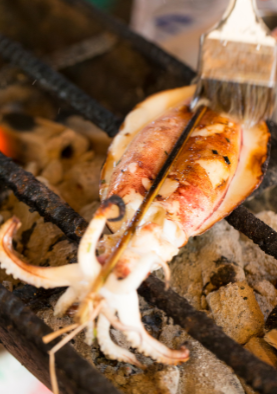
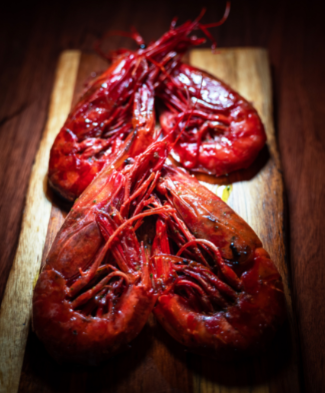
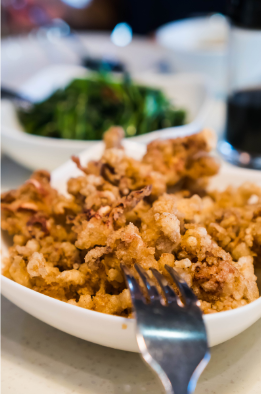
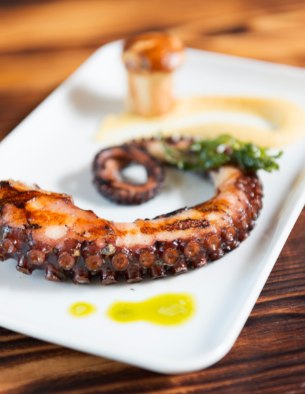
Squid is cooked on a high heat for a short time using only olive oil, salt and pepper and then garnished with a little parsley and that’s about it, delicious!
Gamba Roja is the ‘red prawn’ and comes in as one of the most expensive dishes on the seafood menu. The Prawn is fished in the Mediterranean Spanish towns of Denia and Garrucha, and Huelva. It presents a very intense red colour and it is valued for its fine, firm and tasty meat. It is fished with the technique of bottom trawling and in summer they are usually bigger then in winter.
Chipirones are fried baby squid lightly flowered and deep fried in oil. This dish is a favourite of some of us here at SGM Abogados and is usually ordered as a starter or complimentary dish.
Pulpo or octopus is a firm favourite of the Spanish seafood menu and is served multiple ways. If not cooked well it can be a little tough and chewy so we always recommend to try this dish at a well reputed restaurant. Pulpo can be ordered as a soup, starter or as a main course.







